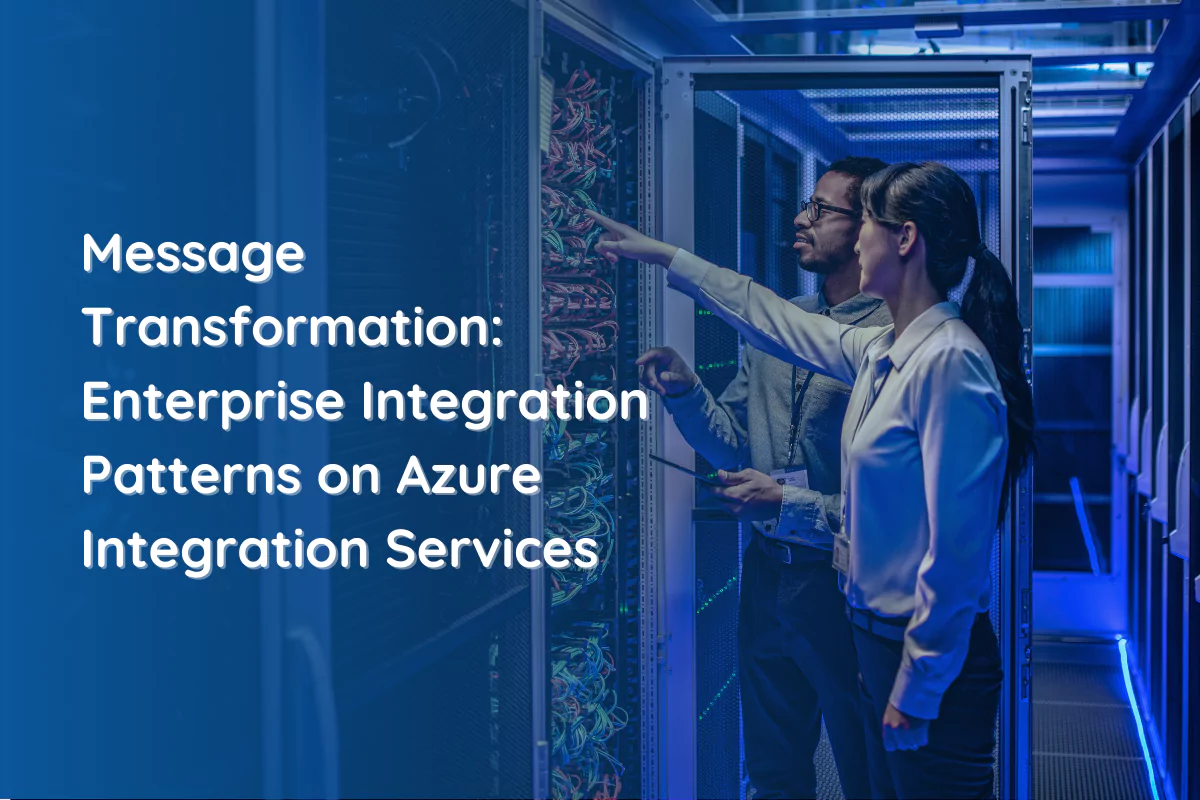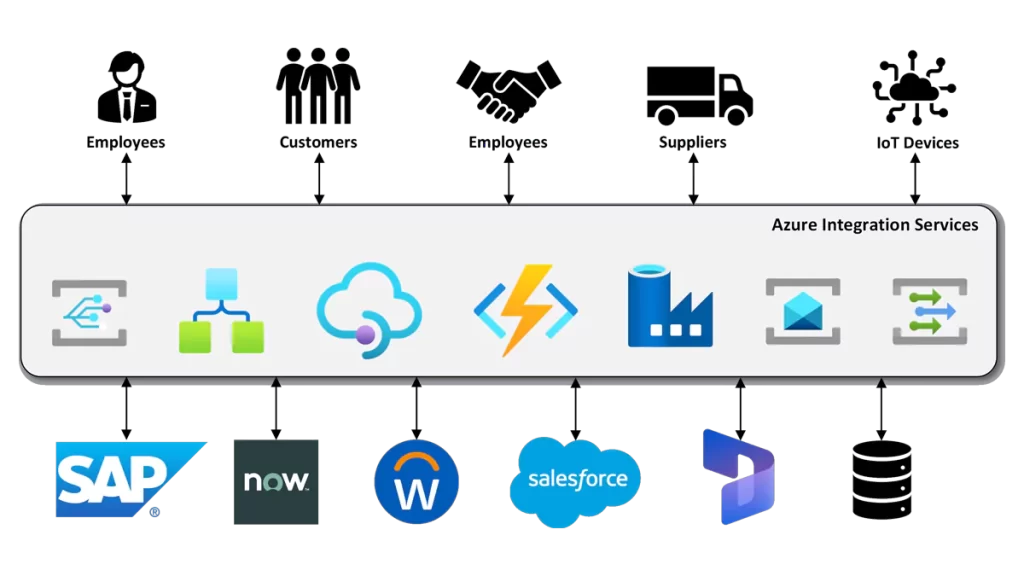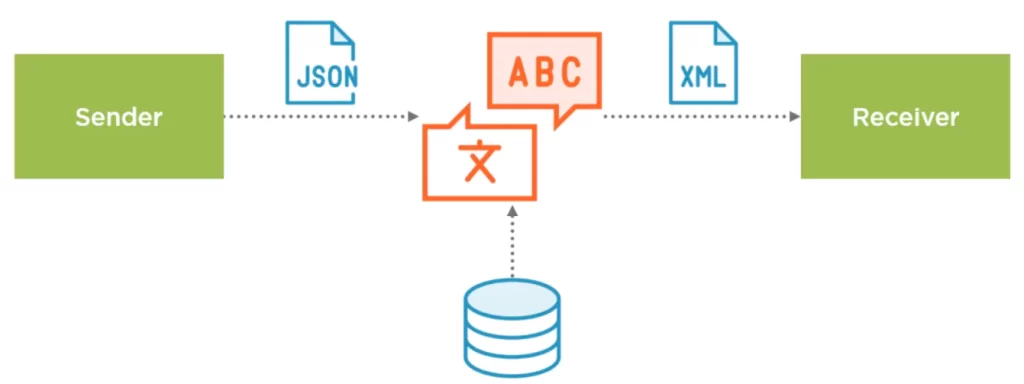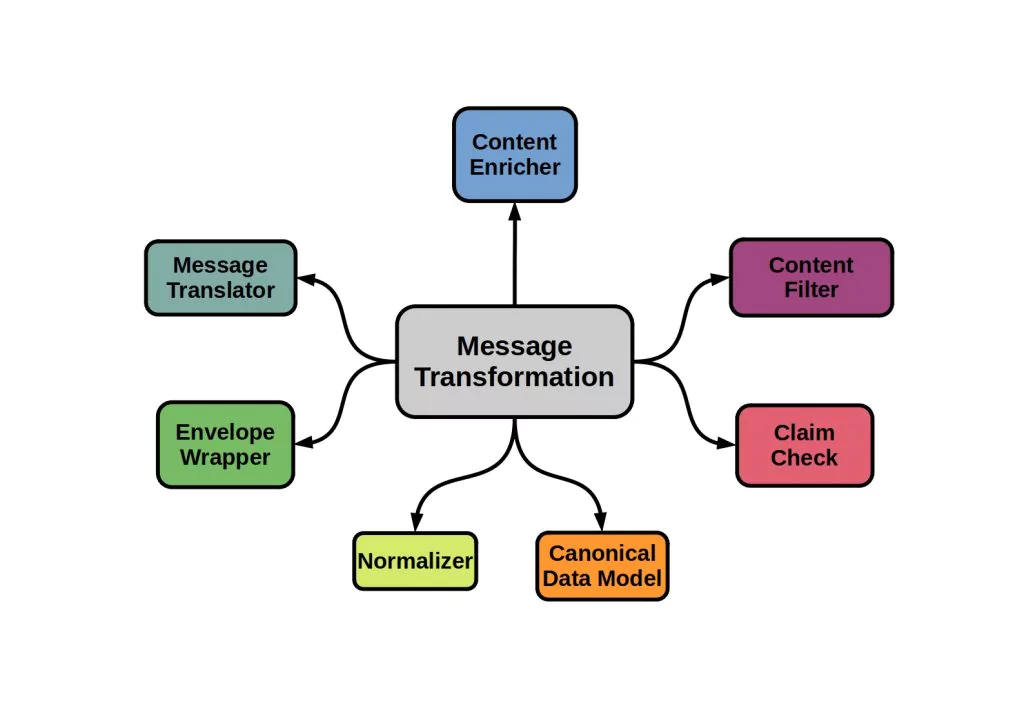- Lavelle Road, Bangalore
- contact@basofa.com

Enterprise integration is crucial to enhancing internal processes in an organizational structure. It allows seamless implementation and distribution of vital applications. As such, Enterprise Integration Patterns maximize opportunities for organizations to boost scalability and increase their reach.
But one may ask, what is Enterprise Integration Patterns? It is a group of 65 integration patterns that help developers build distributed applications and integrate existing ones. Implementing Enterprise Integration Patterns can be easily implementedusing the Azure Integration Service suite. It includes a set of platforms to create integration solutions, including:
1. Logic Apps
2. Event Grid
3. Service Bus
4. API Management
5. Azure Functions
6. Azure Monitor

Message transformation is a significant part of these Enterprise Integration Patterns, which we will explore today. Learn about the common message integration patterns, their benefits, and more.
Message Transformation- Enterprise Integration Patterns
Message transformation patterns refer to the guidelines for transforming messages to match the document format of the receiving service. They are needed when the received message’s structure does not match the expected standard. They are also required when one must convert the received message from a non-standard format to XML.

For instance, a service sends data in XML format. However, the receiving mobile client accepts only JSON format. The intermediary system has to convert the message format to facilitate communication between these two systems. It helps two systems communicate without the message format creating a hindrance.
Let’s look at some message integration patterns that allow seamless communication between devices:
Common Message Integration Patterns
As an integral part of the enterprise integration patterns list, message transformations include the following integration patterns:

1. Message Translator: This pattern explains how you can translate data from one format to another at different levels, including
• Data Structure
• Data Types
• Data Representation
• Transport
2. Envelope Wrapper: This pattern explains integration solutions and adds a wrapper to the message. It helps contain the metadata needed for the integration process while delivering messages in the receiver’s format.
3. Content Enricher: This pattern helps when the incoming message does not contain all the data that has to be processed in the target system. It connects with an additional data source to fill in the missing information in the content.
4. Content Filter: Content filtering explains how to remove data elements that are not useful for the target system. It also helps remove sensitive information before message delivery.
5. Claim-Check: The Claim-Check pattern helps reduce the message size without compromising its information.
6. Normalizer: A normalizer translates messages with similar meanings but different structures to a standard format. It is a combination of a Message Router and Message Translators.
7. Canonical Data Model: This transformation pattern helps when semantically equivalent messages need to be converted between multiple applications. By offering a common model, it reduces the number of message translators.
8. Compression/Decompression: This type of data representation transformation is helpful for translating large amounts of data.
9. Encryption/Decryption: This is also a data representation transformation pattern. It is not included in the Enterprise Integration Patterns book but is a common requirement.
Implementing Message Transformation on Azure
An essential part of Enterprise Integration Patterns microservices, Message transformations help adapt the messages to different formats and metadata. While implementing Message transformations, you have to consider certain aspects, like:
• Message mapping may involve a script, code or graphical tool.
• Message enrichment encompasses using databases, web services, and files.
• Message routing- Routing involves using a mediator, broker, or gateway.
Following these best practices will ensure the messages are reliable, consistent, and interoperable. This will be valuable for building and maintaining complex network systems that require seamless communication between diverse applications.
Additionally, security measures are essential. So, robust encryption and authentication systems play a crucial role. Protecting sensitive information is significant.
Benefits of Message Transformation on Azure
Message transformations offer several benefits for organizations. The most crucial ones on the list would be:
1. Improved Interoperability: Message transformations allow different software components to collaborate with each other, even when the programming language and interfaces are different. When all the systems in an organization understand the messages, it promotes interoperability.
2. Enhanced Agility: Message transformations in Enterprise Integration Patterns allow seamless data transfer between different systems. This enables rapid responses that further boost adaptability to evolving market needs. It allows companies and organizations to stay ahead of their competitors.
3. Streamlined integration processes: Message transformations remove the basic dependencies between applications. It eliminates the need for one application to be aware about the other application’s location. This enables a straightforward and streamlined integration process, allowing organizations to prioritize innovations.
Conclusion
Understanding Message Transformation helps you consider different approaches when implementing Enterprise Integration Patterns. This is because enterprise integration requires handling messages with various formats and structures.
As such, message transformation serves as an essential aspect of enterprise integration.
Implementing messaging patterns through Azure Integration Services allows organizations to drive agility and efficiency in enterprise integration. It helps them utilize the full potential of their data assets for higher interoperability of systems.
Adopting Azure Integration Services can be a strategic move to gain a competitive advantage in a changing market.
Frequently Asked Questions
1. How is Message transformation different from Message routing?
Both message transformation and Message routing are significant aspects of Enterprise integration patterns. However, Message routing involves connecting message channels. It does not alter the messages and only regulates forwarding based on predefined criteria.
On the other hand, Message Transformation facilitates integration between various systems that communicate in different message formats.
2. What are some Enterprise Integration Patterns examples?
Enterprise Integration patterns include:
• Point-to-point integration
• Hub-and-spoke integration
• Publish-subscribe pattern
• Service-oriented integration
• Data integration patterns
• API integration patterns
3. What benefits do Azure Integration Services provide?
Azure Integration Services allow organizations to build integrated solutions that connect applications in the cloud and on-premises. They help streamline business workflows to enhance consistency and scalability.
